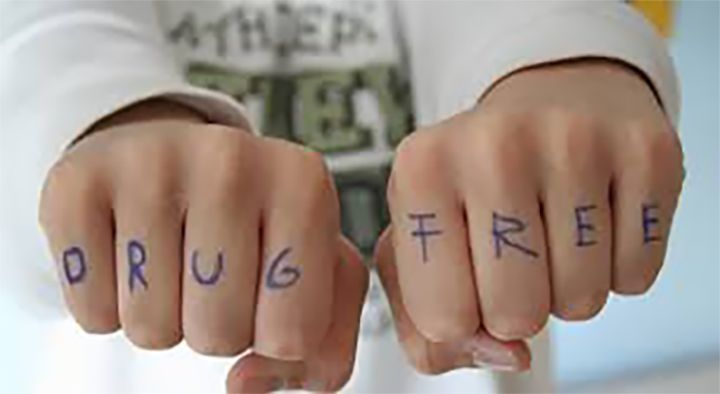Sobriety is a journey … not a destination.
The abuse or dependency on a substance is a difficult journey for an adolescent that is often filled with pitfalls and setbacks on the windy road to recovery.

SETBACKS
Child and Adolescent Behavioral Health’s Substance Use Disorder Lead Dr. Karita Nussbaum said if a user experiences a slip up in recovery and uses, the user will feel guilt and shame. If a user does use again, this is a life lesson. “Sometimes we do have failure and must learn from this.”
Dr. Nussbaum added that the recovery process is difficult, especially when the brain can convince a person that if they use the substance one more time, it is okay. The person underestimates the power of the substance as it can be deceiving.
The emotional process and the changes the body undergoes in recovery is tougher than the average person realizes. Dr. Nussbaum said the brain adapts to whatever a person puts in the body. The reason the addiction started in the first place is the user typically does not know how to deal with their emotions. During recovery, there is anger and a lot of sadness as the user learns how to manage emotions they don’t like. The substance provided an escape but now the user is learning how to live life.
STAGES OF RECOVERY
Dr. Nussbaum described a treatment therapists use with substance users in recovery. Motivational Interviewing is a methodology that helps people resolve ambivalent feelings and insecurities to find the internal motivation they need to change their behavior.
Dr. Nussbaum used an example of a substance user being addicted to marijuana.
- Stage 1 – In the beginning, the user does not see a problem at all with using the substance of choice, in this case marijuana.
- Stage 2 – They are contemplating that something is amiss. They see that there needs to be a change. They have tried to quit and cannot.
- Stage 3 – This is the action stage. Here, the substance user is making changes. Some changes the marijuana user is making might be getting rid of all devices they used to smoke marijuana; deleting phone numbers of his/her dealers; and starting to attend meetings - Alcohol Anonymous (AA) if alcohol is the substance and Narcotics Anonymous (NA) if narcotics is the substance. The substance user will set a quit date.
- Stage 4 – Is the maintenance stage. In this stage, users are sober and working toward the life they desired.
STAYING SUBSTANCE FREE
Once the substance user has made a strong commitment to being substance free, Dr. Nussbaum said there are strategies to stay substance free.
Dr. Nussbaum said the maintenance stage is a key stage in recovery. “I often have clients take a look back in time during this stage and compare their life before and now. What did life look like three months ago and what does life look now that you are now longer using a substance.”

Dr. Nussbaum went on to say the eyes of time help substance users look at the old versus new and to look forward. She said now the recovering substance user has different choices. Dr. Nussbaum used a current client as an example of what different choices look like. She said they examined how much money the user spent on supplies for the substance; the purchase of the substance; coming to therapy sessions; etc. The grand total was more than $4,000. Dr. Nussbaum asked the client what the client would do with the $4,000 had the client not been addicted to a substance? The teenager responded he’d “buy a better car.”
Dr. Nussbaum said continued therapy is required in after care. She said this includes lining up the supports in the client’s life, attending either a weekly group meeting, one-on-one counseling therapy or both. Then the client needs to understand the triggers, cravings and urges that come with withdrawal and recovery and lean on the support people in their life. Oftentimes, the support person is not a parent or family member unless that person has been through a substance use issue and recovered.

HANDLING THE TRIGGERS
The triggers for an addict in recovery are the pitfalls that can lead to a relapse. For example, for a person that was addicted to alcohol, the holidays or a Super Bowl party or any social gathering where alcohol will be prevalent could be that trigger.
For an adolescent or teenager, spring break may be the trigger. The question the person in recovery will wrestle with is “Where should I go?” “Where should I not go?” For example, if the teenager is recovering from a substance and is invited to a party, the teen can walk through strategies for attending the gathering. Those strategies would be:
Who can come with me to the social-gathering?
Who can I call if I get in trouble – counselor, support-person?
Sober supports – AA or NA sponsors
For substance users in recovery, they will often receive a coin to mark sobriety celebrations. Dr. Nussbaum said the tokens are symbolic and represent an accomplishment. AA uses coins and NA tends to use key chains. The coins or key chains represent work and sacrifice the person in recovery has made. These coins represent surviving one step at a time, one hour at a time and one day at a time.
RECOGNIZE AND CELEBRATE THE CHANGE
Dr. Nussbaum said in the end, the person who recovered should recognize the change and progress they have made and look forward to the future.
“The person who recovered should recognize the change,” said Dr. Nussbaum. “Here is where I am. I know how to handle myself. I can recognize my own growth. They need to compliment themselves.”
If you suspect your child or a teenager who might be addicted to a substance, please call C&A at 330.433.6075.
- This concludes on our series on addiction with C&A’s Dr. Karita Nussbaum. Below are links to read previous posts.
https://childandadolescent.org/the-first-signs-of-addiction/
https://childandadolescent.org/is-your-child-using-a-substance/
RECENT POSTS












